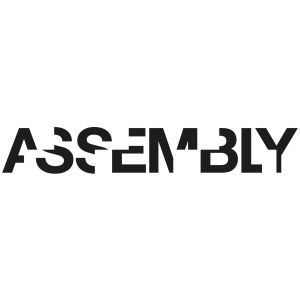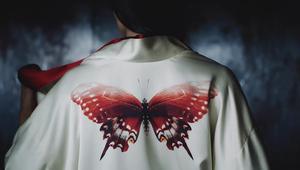
Making the Grade: Aaron Burns on Why Subtlety Is the Name of the Game

Aaron has been working in the motion picture industry since the early 2000s. He came up splitting his time between editorial and the camera department before finding a love of colour. His credits as a colourist include dailies for The Marvellous Mrs Maisel, Penny Dreadful: City of Angels, Maniac, Tales of the City, Life Itself, You Were Never Really Here, and many more. When he is not in the grading suite crafting beautiful images, you can find him taking pictures or rock climbing.
LBB> What was your first experience with the world of colour grading – and when did you decide that being a colourist was a role that you wanted to pursue?
Aaron> I had just moved to NYC in 2008 and I was allowed to sit in on a grading session and the colourist said this image was too red. He then pushed a button and the image instantly transformed and looked completely different. I thought at that moment this is what I want to do!
LBB> What was the project that you felt really changed your career?
Aaron> I was the dailies colourist for Mrs. Maisel on Amazon. At the time it was the first big studio series I worked on with big names attached. A lot of people were going to see the dailes and it turned out that they liked the work I did. I saw a finished reference picture prior to the final grade with dailies colour. It looked consistent and the scenes matched. It later then closely resembled the finished grade. It was then I knew that I could do this.
LBB> How/where did you hone your craft and did you have any particular mentors?
Aaron> I cut my teeth in dailies. Every night I was matching hundreds of shots before 7am. I also spent a lot of time watching senior and supervising colourists work. I would try to recreate their grades from scratch and learn to see how they see the image and where it needs to go. I was very fortunate to learn a lot from Sean Dunckley, Steve Bodner, and Sam Dailey.
LBB> Tell us more about your creative process - (e.g. When you get a project, how do you go about developing a look?)
Aaron> I talk with the DP, director, and other creatives involved in the look of the show. I examine their references and figure out what they want the show to feel like. We then set looks, and once they are approved and everyone is on the same page it is time to get colourful and create some stunning images.
LBB> From experience, we’ve found that colourists often love art and photography - when you’re out of the studio, what inspires you?
Aaron> I take inspiration from a lot of the early street photographers like Fred Herzog, Gordon Parks, Saul Leiter, and countless others.
LBB> Colour grading is largely a digital affair, but there’s also been a resurgence of film over the past few years in commercials and music videos. What are your thoughts about working on film versus digital formats like 4K? And what are your favourite techniques for capturing a vintage or tactile feel?
Aaron> Film is a beautiful medium. It has defined characteristics and behaviours and it is considered by many to be the original standard. I believe that digital acquisition is much more malleable and can be worked to embody the characteristics of film. I like playing with silver retention looks, a flashed film look, and pushing and pulling to manipulate the shadows and rolling off the highlights.
LBB> When working in commercials, what role can colour and a grade play in enhancing a brand’s assets and what sort of conversations do you have with creatives and clients about that (e.g. is there often a strategic/consistent ‘look’ for a brand? Can these be too heavy handed?)
Aaron> Colour grading helps draw the viewer's eye. I feel that subtlety is the name of the game. Being too heavy handed with the grade can take you out of the world. Every job is different and requires a unique approach to find the perfect balance and what feels right for the job.
LBB> How do you ensure that each colourist-director partnership is a success?
Aaron> Listen and communicate that you understand what your clients are looking to achieve with the grade. I try to develop a creative shorthand so we can communicate quickly and effectively.
LBB> What advice would you give to budding colourists?
Aaron> Practice, Practice, Practice. Try to deconstruct established looks and figure out what makes them successful and why it works. The why is more important than the how. Also network like your livelihood depends on it because it does!!
LBB> In your opinion, what's the difference between a good grade and a great grade?
Aaron> A good grade is seamless and has a balanced sense of continuity. But a great grade evokes a feeling without being in your face.
LBB> How is the craft and trade of colour grading changing?
Aaron> The toolset and the technology are constantly evolving. The point of entry is more accessible than ever before. It is an exciting time to be a colourist!













